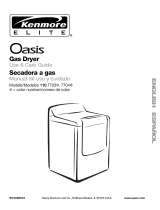
,i_!_ii!i!i!i!i!i!i!i!i!i!i!i!i!i!i!i!i!i!i!i!i!i!i!i_i_i_ii!i¸i!i!i!i!i!i!i!i_i_ii_ii_ii_ii_ii_ii_ii_ii_ii_ii_ii_ii_ii_ii_i_iiiiYiiiiii//li¸il¸iiii_ii,i_ii,i_ii,i_ii,i_ii,i_i_iii_i_ii_il'ii_i_iil'ii_i_iil_i_ii_i_ii_i_ii_ii_i_ii_:ii:_:i_:ii:_:i_:ii:_:i_:ii:_:i_:ii:_:i_:ii:_:i_:ii:_:i_:_i_::¸ _:iii!ii,l,ii_,,¸¸¸¸_!_iiiiiiiii_i_ ¸il¸ii_ii_ii¸I¸I¸il¸ii_ii¸ii_ii¸ii_ii¸ii_iil¸ii_i_iil¸I¸iiiii_iiiii_i_i_ii_i_iiiii_ii_iii_ii_iii_iiiiiiiiiiiiiiiiiiiiiiiiiiiiiiiiiiiiiiiiiiiiiiiiiiiiiiiiiiii_!_!!
TABLE OF CONTENTS
DRYER SAFETY .......................................................................................................................... 3
INSTALLATION INSTRUCTIONS ............................................................................................. 5
Tools and Parts ....................................................................................................................... 5
I.ocation Requirements .......................................................................................................... 5
Electrical Requirements .......................................................................................................... 6
Gas Supply Requirements ...................................................................................................... 7
Venting Requirements ............................................................................................................ 8
Plan Vent System .................................................................................................................. 10
Install Vent System ............................................................................................................... 11
Install I_eveling I.egs ............................................................................................................. 11
Make Gas Connection .......................................................................................................... 12
Connect Vent ....................................................................................................................... 12
I.eve[ L-)ryer .......................................................................................................................... 13
Reverse Door Swing ............................................................................................................. 13
Complete Installation ........................................................................................................... 15
DRYER USE.............................................................................................................................. 16
Starting Your L-)ryer............................................................................................................... 16
Stopping, Pausing, or Restarting ........................................................................................... 17
L-)rying and Cycle Tips .......................................................................................................... 17
Status I_ights.......................................................................................................................... 18
Cycles .................................................................................................................................. 18
Modifiers .............................................................................................................................. 19
Options ................................................................................................................................ 19
End Signal ............................................................................................................................ 20
Changing Cycles, Modifiers, and Options ............................................................................ 20
L-)rying Rack Option ............................................................................................................. 20
DRYER CARE ........................................................................................................................... 21
Cleaning the L-)ryer I.ocation ................................................................................................ 21
Cleaning the I_int Screen ...................................................................................................... 21
Cleaning the L-)ryer Interior ................................................................................................... 22
Removing Accumulated Lint ................................................................................................ 22
Vacation, Storage and Moving Care ..................................................................................... 22
Changing the Drum Light ..................................................................................................... 22
TROUBLESHOOTING ............................................................................................................. 22,
L-)ryer Operation ................................................................................................................... 23
Dryer Results ........................................................................................................................ 24
ASSISTANCE OR SERVICE ....................................................................................................... 26
In the U.S.A .......................................................................................................................... 26
In Canada ............................................................................................................................. 26
ACCESSORIES ......................................................................................................................... 26
WARRANTY ............................................................................................................................ 27
TABLE DES MATIERES
SI_CURITI_ DE LA SI_CHEUSE ................................................................................................... 28
INSTRUCTIONS D'INSTALLATION ....................................................................................... 31
Outillage et pi_ces ............................................................................................................... 31
Exigences d'emp[acement .................................................................................................... 31
Sp6cifications 6lectriques ..................................................................................................... 32
Sp6cifications de ['a[imentation en gaz ................................................................................ 33
Exigences concernant ['6vacuation ...................................................................................... 35
P[anification du syst_me d'6vacuation ................................................................................. 36
Installation du syst_me d'6vacuation .................................................................................... 38
Installation des pieds de nivellement .................................................................................... 38
Raccordement au gaz ........................................................................................................... 38
Raccordement du conduit d'6vacuation ............................................................................... 39
R6g[age de ['aplomb de [a s6cheuse ..................................................................................... 39
Inversion du sens d'ouverture de [a porte ............................................................................. 39
Achever ['installation ............................................................................................................ 42
UTILISATION DE LA SI_CHEUSE............................................................................................. 43
Mise en marche de [a s6cheuse ............................................................................................ 43
Arr_t, pause ou remise en marche ........................................................................................ 44
Consei[s pour [e s6chage et [es programmes ........................................................................ 45
T6moins [umineux ................................................................................................................ 45
Programmes ......................................................................................................................... 46
Modificateurs ....................................................................................................................... 47
Options ................................................................................................................................ 47
End Signal (signal de fin de programme) .............................................................................. 48
Changement des programmes, modificateurs, et options ..................................................... 48
Option de grille de s6chage ................................................................................................. 48
ENTRETIEN DE LA SI_CHEUSE ................................................................................................ 49
Nettoyage de ['emplacement de Has6cheuse ........................................................................ 49
Nettoyage du filtre _ charpie ................................................................................................ 49
Nettoyage de ['int6rieur de Has6cheuse ................................................................................ 50
Retrait de Hacharpie accumul6e ........................................................................................... 50
Pr6cautions _ prendre avant [es vacances, un entreposage ou un d6m6nagement ............... 50
Changement de ['ampoule d'6clairage du tambour .............................................................. 51
DI_PANNAGE .......................................................................................................................... 51
Fonctionnement de Has6cheuse ........................................................................................... 51
R6sultats de Has6cheuse ....................................................................................................... 52
ASSISTANCE OU SERVICE ...................................................................................................... 54
Au Canada ........................................................................................................................... 54
ACCESSOIRES .......................................................................................................................... 54
GARANTIE ............................................................................................................................... 55




















